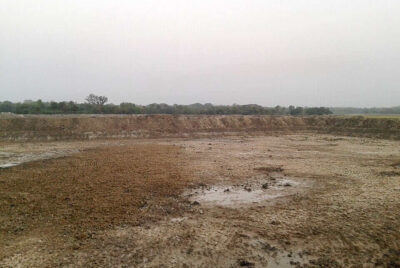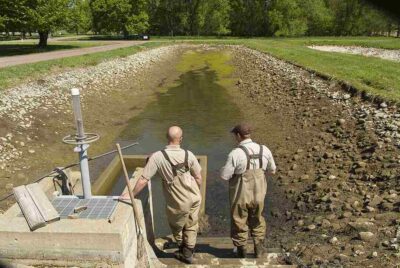What distinguishes a Lake from a Pond?
Introduction to Lakes and Ponds
Welcome! If you’ve ever wondered “what is the difference between a lake and a pond”, you’ve come to the right place. In this article, we will embark on a fascinating exploration of the natural world, diving into the unique characteristics that define lakes and ponds. Despite often being used interchangeably in conversation, there are indeed distinct differences between these two bodies of water.
Both lakes and ponds play vital roles within their ecosystems and provide habitats for a diverse range of wildlife. In addition to supporting plant and animal life, they also serve important functions for human communities, often providing a source of water for irrigation, drinking, and leisure activities.
To truly appreciate the diversity and importance of these bodies of water, it is critical to understand their unique characteristics. This knowledge can also help us to better protect and conserve these valuable resources for future generations.
Understanding What a Lake is
To begin, let us delve into the question: what exactly is a lake? In general terms, a lake is a large body of water surrounded by land. However, this broad definition doesn’t quite capture the full essence of what makes a lake truly a lake.
Lakes are typically much larger and deeper than ponds, with surface areas that can span hundreds or even thousands of square miles. They are usually found in mountainous areas or in basins created by geological activity.
The depth of a lake is particularly important as it can influence the temperature, light penetration, and the types of organisms that can survive within its depths. Unlike ponds, the deeper parts of lakes do not generally receive sunlight, resulting in stratification or layering of the water based on temperature and light penetration.
Understanding What a Pond is
Now that we have a better understanding of lakes, let’s turn our attention to ponds. If you’ve ever wondered “what is the difference between a lake and a pond,” understanding the nature of a pond is key.
Ponds, like lakes, are bodies of water surrounded by land. However, they are generally smaller and shallower. The defining characteristic of a pond is that sunlight can reach the bottom, regardless of its depth. This allows for plant growth throughout the pond, making it a richly biodiverse environment.
Ponds can be found in a variety of environments, from urban parks to rural farmlands, and can vary greatly in size and depth. They are often formed by natural processes such as glacial activity, or by human activity such as damming a spring or stream.
Key Differences Between a Lake and a Pond
Now that we have a good understanding of what constitutes a lake and a pond individually, let’s delve into the key differences between the two. In essence, the difference between a lake and a pond largely comes down to size, depth, and the ability of sunlight to penetrate the water’s surface.
As mentioned earlier, lakes are generally larger and deeper than ponds. The depth of a lake often results in stratification, creating distinct layers within the water that have different temperatures and levels of oxygen.
On the other hand, ponds are usually shallower and smaller, with sunlight able to reach the bottom. This allows for the growth of plants throughout the pond, contributing to a vibrant and diverse ecosystem.
Pond vs Lake: Size and Depth
If you’re still wondering about the difference between a lake and a pond, size and depth are the most apparent distinctions. As mentioned earlier, lakes are generally larger and deeper than ponds.
The vast size and depth of lakes can create various zones within the water body, each with its own distinct temperature, light penetration, and biodiversity. The surface layer, or epilimnion, is the warmest and contains the most oxygen, while the deepest layer, or hypolimnion, is the coldest and contains the least oxygen.
In contrast, ponds are more uniform in temperature and oxygen levels due to their comparatively shallow depth. This homogeneity provides a more consistent environment for plants and animals, contributing to a diverse ecosystem throughout the pond.
Pond vs Lake: Water Temperature Differences
Another key distinction when considering the difference between a lake and a pond is the variation in water temperature. The large size and depth of lakes often lead to significant temperature differences between the surface and the bottom. This temperature stratification can influence the types of organisms that inhabit different zones of the lake.
In contrast, ponds, due to their shallower depth, have a more even temperature distribution. Uniform temperature and light support diverse plant and animal life due to increased variety in lakes.
Pond vs Lake: Ecosystem and Biodiversity
The ecosystems of lakes and ponds are also noticeably different. Lake size and depth create varying conditions, supporting diverse species confined to specific zones.
Ponds, with uniform conditions, sustain high biodiversity across the entire body of water. Ponds often teem with a variety of plant, insect, bird, and fish species, all coexisting within the same space.
Practical Implications of the Difference Between Lake and Pond
Understanding the difference between a lake and a pond carries practical implications, particularly for conservation efforts. Since lakes and ponds support different types of ecosystems, they require different conservation strategies.
Lake protection maintains water quality in stratified layers; pond conservation preserves overall biodiversity.
Understanding differences in water bodies impacts recreational use; lakes for vast activities, ponds for intimate experiences.
Conclusion: The Importance of Understanding the Distinct Difference Between a Lake and a Pond
In conclusion, the distinction between a lake and a pond is more than just a trivial matter of semantics. Understanding these differences is crucial for appreciating the rich biodiversity that these bodies of water support, and for guiding our conservation efforts to preserve these vital ecosystems for future generations.
Whether you are a nature enthusiast, a student of ecology, or simply someone who enjoys spending time near bodies of water, I hope this exploration of lakes and ponds has been both enlightening and enjoyable.
Remember, every time you stand by a serene pond or gaze across a vast lake, you are witnessing a unique and fascinating ecosystem, teeming with life and brimming with natural wonder.
Frequently Asked Questions about Lake and Pond Differences
Q: Are there any exceptions to the defined differences between a lake and a pond?
A: Yes, there are always exceptions in nature. Some lakes may be shallow enough for sunlight to reach the bottom, and some ponds may be exceptionally deep or large.
Q: Is one more important than the other for biodiversity?
A: Both lakes and ponds are crucial for biodiversity. While ponds often support a diverse range of species within a small area, lakes can support different species in their various stratified zones.
Q: What is the main difference between a lake and a pond?
A: The main difference often lies in the depth and the thermal stratification. Ponds are generally shallower and sunlight can reach the bottom across the entire width, which allows plants to grow throughout. Lakes, on the other hand, are usually too deep for sunlight to reach the bottom, leading to a different distribution of plant and animal life.
Q: Can a body of water change from being a lake to a pond or vice versa?
A: Over time, due to natural processes like sedimentation, a lake can potentially become shallower and turn into a pond. Conversely, human intervention or geological activity could deepen a pond enough for it to be considered a lake.
Q: How do the ecosystems in lakes and ponds differ?
A: Due to differences in depth, sunlight penetration, and size, lakes and ponds often host different ecosystems. Lakes tend to have a more diverse stratification of life due to their depth, with different organisms living at different depths. Ponds, being shallower, tend to have more uniform life distribution.




